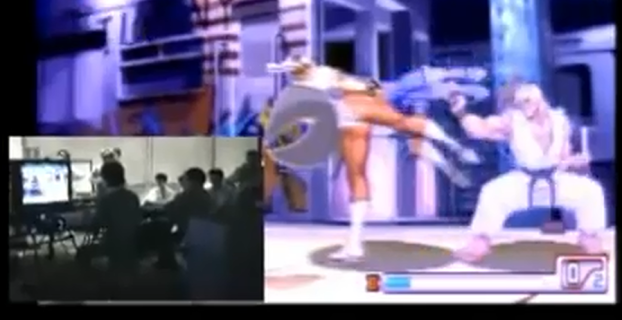Fighting games are a pretty old-school genre. As far as I can tell, they became massively popular back in the dimly-lit arcades of the 90s, the ultimate culmination of one-on-one battles between players. It took a combination of tactical thinking and deft execution to win in the most popular games (e.g., Street Fighter II and Mortal Kombat II), and there was always a huge line of challengers queuing at the machine, with their quarters slotted in the token holders.
With the demise of arcades and a flood of copycats, fighting games took a huge hit in popularity in the 2000s, but experienced a revival of sorts with the release of Street Fighter 4 and have remained strong since. The community around fighting games has persisted throughout, and the Evolution Championship Series (Evo) is the biggest venue for fighters every year.
Evo Moment 37 is a book that tries to provide some additional context around what is considered the greatest single moment in fighting game history. Here is the actual clip:
http://www.youtube.com/watch?v=KS7hkwbKmBM
If you’re not familiar with Street Fighter, 3rd Strike or fighters in general, there’s a lot going on here. I’ll try to explain…
Fighting Game Primer
Let’s start with the basics. Fighting games pit two players on a stage, where they punch and kick and shoot fireballs at each other. Each player’s health pool is represented as a bar on the top of the screen, and the character is knocked out when the health bar empties.
Every character can defend against attacks by blocking, typically by holding back on the joystick. If they block successfully, they will not take the damage from the move, but instead will either take no damage (for blocking a normal move), or a tiny amount of “chip damage” (for blocking a special move). Chip damage works like any other type of damage, in that the player can still lose if they don’t have enough health left.
In addition to blocking, SF3 introduced the Parry. It’s a system that rewards precise execution: if a player taps forward on the joystick at the exact moment – within 7 frames of animation, which is about 1/10th of a second as the game runs at 60 FPS – an attack lands, then they take no damage at all even if it’s a special move. The risk is that since the motion is forward, the player cannot block in their parry attempt, and missing the parry will result in getting hit.
The Full Parry
So what’s happening in that video?
The two fighters are Ken and Chun Li, and they’re fighting in one of the last stages of the Evo tournament in 2004. When the video starts, Ken is behind in health, and Chun Li is content to run away and let time expire, getting the win by default. Ken has to pressure her around the stage, and fight until he has basically no health. Any special attack – which would still do chip damage if blocked – would knock him out.
Chun Li knows this, and throws out her “super art”: a 15-hit combo that usually takes less than 2 seconds to finish. Ken reads the situation correctly, and in a masterful display of execution, parries all 15 hits. He even successfully counterattacks and throws out his own super move, doing just enough damage to finish the round. It’s an amazing display of skill and poise, an unlikely comeback with the perfect set of circumstances.
Evo Moment 37
Back to the book. In short, it’s not very good.
The prose reads like a grade school book report. The author outlines events matter-of-factly, but doesn’t provide much insight or context around the story he’s telling. He has this nasty habit of spelling out the exact chronology of a match, which reads like sports play-by-play without color commentary. He tries to instill more depth into his main characters by interleaving their thoughts, but the characters end up sounding one dimensional anyway.
Beyond these issues with the writing, the author may have doomed himself with the subject matter to begin with. Evo Moment 37 was an awesome moment in fighting game history, but a moment in a tournament does not (and has not) change lives. In the greater context, the players involved were getting more popular in the wider community, Evo was becoming the biggest tournament, and fighting games were still suffering a decline in play; none of these trends were altered by this one singular snapshot.
Playing to Win
If you made it this far into this blog post and are still intellectually curious about fighting games, I’d recommend picking up Playing to Win: Becoming a Champion instead. It’s written by someone who has competed in fighting game tournaments at a high level, and won with a peculiar level of ability and ruthlessness. Playing to Win also gets into game theory and how fighting games are designed and balanced. As a bonus, the author is a much better writer, and his subject and prose is a lot more approachable than Evo Moment 37. The only thing going for Evo Moment is that it’s available via the Kindle Owners’ Lending Library.



